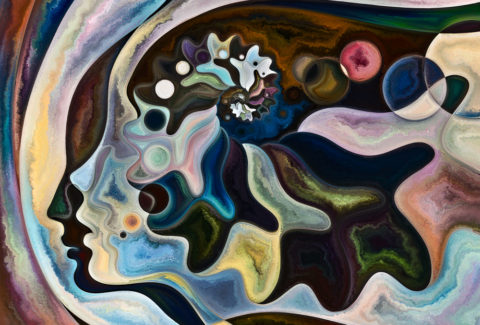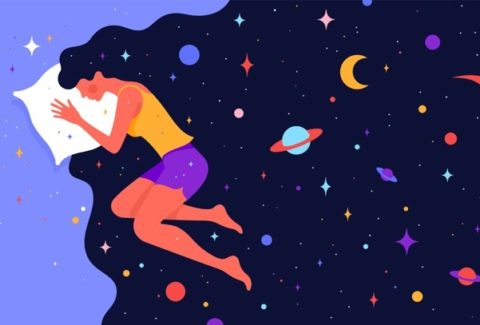I Know A Lot, Yet…

I Know A Lot, Yet…
“I know a lot of this stuff, at least I think I do. But, it just doesn’t seem to be making much of a difference.” Marlene articulated these words to her clinician, Rajvee, who, using the 10-Second Rule and the Triangle Technique, sends an unmistakable signal for her to go on and elaborate on her words.
“I’ve tried so many things. I’ve done CBT, DBT, IPT, Narrative Therapy, and even EMDR. I’ve also gone through couple’s therapy, and family therapy, and while I know what to do, I just either cannot get myself to do any of it or when I do, I stop because I find that it doesn’t seem to be working.”
After proper validation followed by a series of inquiries, Rajvee, leaned over and stated to Marlene, looking at her, “Marlene, you are not alone. This is very common. And the explanation for all this is simply “blocks.” Yes, there are blocks preventing you from moving forward, and the next step for us is to remove those blocks.”
A block is defined as “a large solid piece of hard material.” And etymologically it means “tree stump,” which is the remaining lower part of a tree or plant left after the main part falls or is cut off. In other words, a block is a standing tree trunk from which the upper part and branches have been removed.
Marlene has blocks, says Rajvee. By that, she means Marlene has habitual thoughts that are so deeply rooted that what she knows intellectually has not been enough for her to unroot them. Intellectual understanding uses the cognitive function of reasoning. Reasoning is “the action of thinking about something in a logical and sensible way.[1]” It’s “the use of reason;” or “the drawing of inferences or conclusions through the use of reason.” From an etymological standpoint, “to reason[2]” comes from the Latin verb, “reri,” which means “to consider,” the latter meaning, “to reflect on,” or “to think carefully about something before making a decision.” Yet, are our decisions really conscious? The 2008 Nature article[3] has revealed what many scientists had suspected. “Our brain makes decisions before we even know it.” In other words, “Brain activity predicts decisions before they are consciously made.” In fact, anyone with access to look at our brain activity, while we’re working on making a decision, would be able to predict what we would decide before we were even aware of having made a decision. As the renowned neuroscientist, John-Dylan Haynes said, “We think our decisions are conscious, but these data show that consciousness (referring to conscious thinking, rational thinking, or reasoning) is just the tip of the iceberg.[4]” In 1980, the neuroscientist, Benjamin Libet[5] demonstrated that finding. However, it took 38 years to confirm these findings, thanks to the use of sophisticated computer programing that we did not have back in 1980.
One of the most conservative ways to interpret this finding is, as Chris Frith, the award-winning neuropsychologist said, “We already know our decisions can be unconsciously primed. The brain activity could be part of this priming.”[3] In other words, however logical, rational, intellectual, or meticulous we may be, our decision-making process is primed, biased, and influenced by our unconscious processes. What that means is that we may want something, we may be deciding to act accordingly, we may say we’re going to do it, but our results speak for themselves. In other words, somehow, our reasoning, logic, conscious decision-making process, or willingness are being betrayed by our unconscious processes.
To put this in even more concrete terms, we have been led to believe that we make our decisions consciously. Yet, what really takes place is that our brain prepares our decisions for us, at an unconscious level. This all happens through a number of processes in our brain that occur automatically, and without the involvement of our conscious thinking, our reasoning, our logic, or our intellect. Bottom line, our decisions are determined by the unconscious, and not by the conscious mind, as we’ve always been made to believe. And this discrepancy, this seemingly antagonism or opposition, is what Rajvee referred to as “blocks” in her conversation with Marlene.
“What does all that mean to me, then? What am I to do? What is my next step?” asked Marlene, to which Rajvee responded, “A conscious-unconscious alignment is the answer, and we’ll be talking about this on our next visit.”
Fellow clinician, learn about how:
- Our unconscious mind betrays our conscious decision-making process
- To achieve Conscious-unconscious alignment
- To use this new level of competence to help end suffering, help bring fulfillment, and help yourself, your loved ones, and your patients and clients start living a life of freedom, peace of mind, and satisfaction
Start by clicking here for the next article in this series: The Two Systems of Our Brain
[1] “Reasoning.” https://Www.oed.com/.
[2] “Reason (n.).” Etymology, https://www.etymonline.com/word/reason.
[3] Smith, K. Brain makes decisions before you even know it. Nature (2008). https://doi.org/10.1038/news.2008.751
[4] Hotz, R. L. (2008, June 27). Get out of your own way. The Wall Street Journal. Retrieved April 10, 2022, from https://www.wsj.com/articles/SB121450609076407973
[5] Schlosser, Markus E. “The Neuroscientific Study of Free Will: A Diagnosis of the Controversy.” Synthese, vol. 191, no. 2, 2014, pp. 245–62, http://www.jstor.org/stable/24019927. Accessed 11 Apr. 2022.








